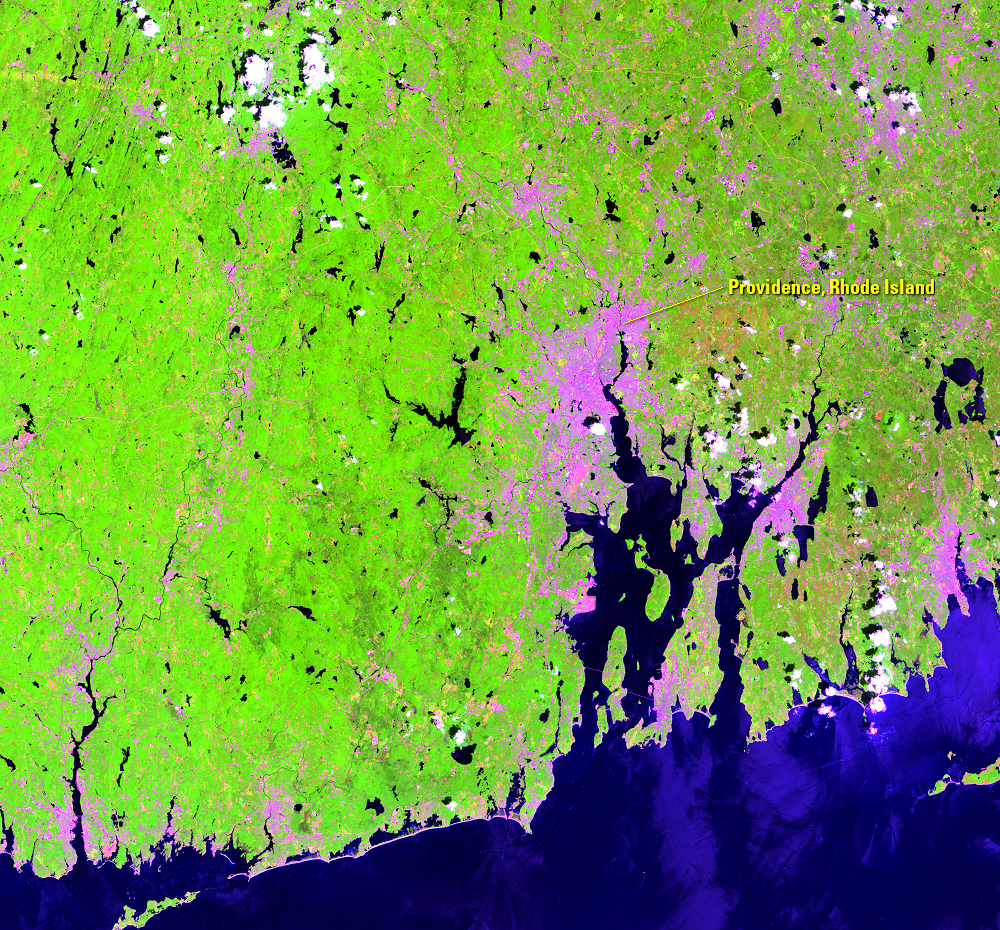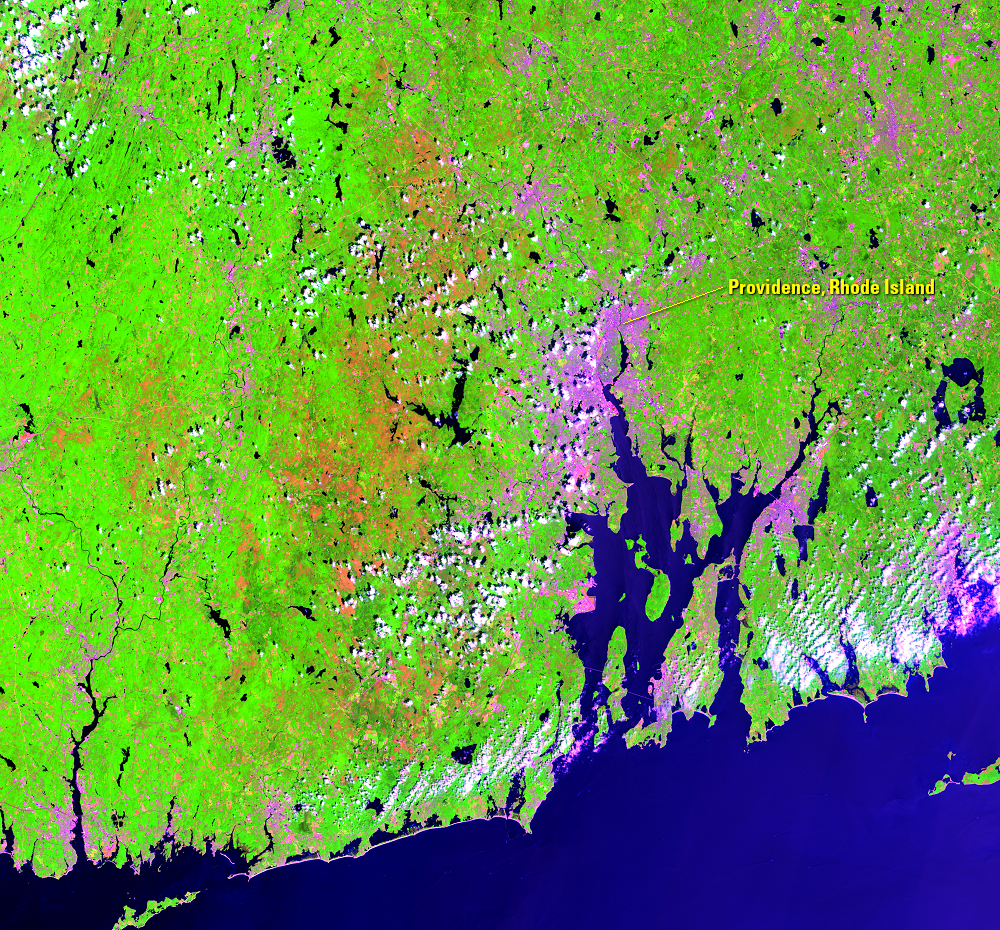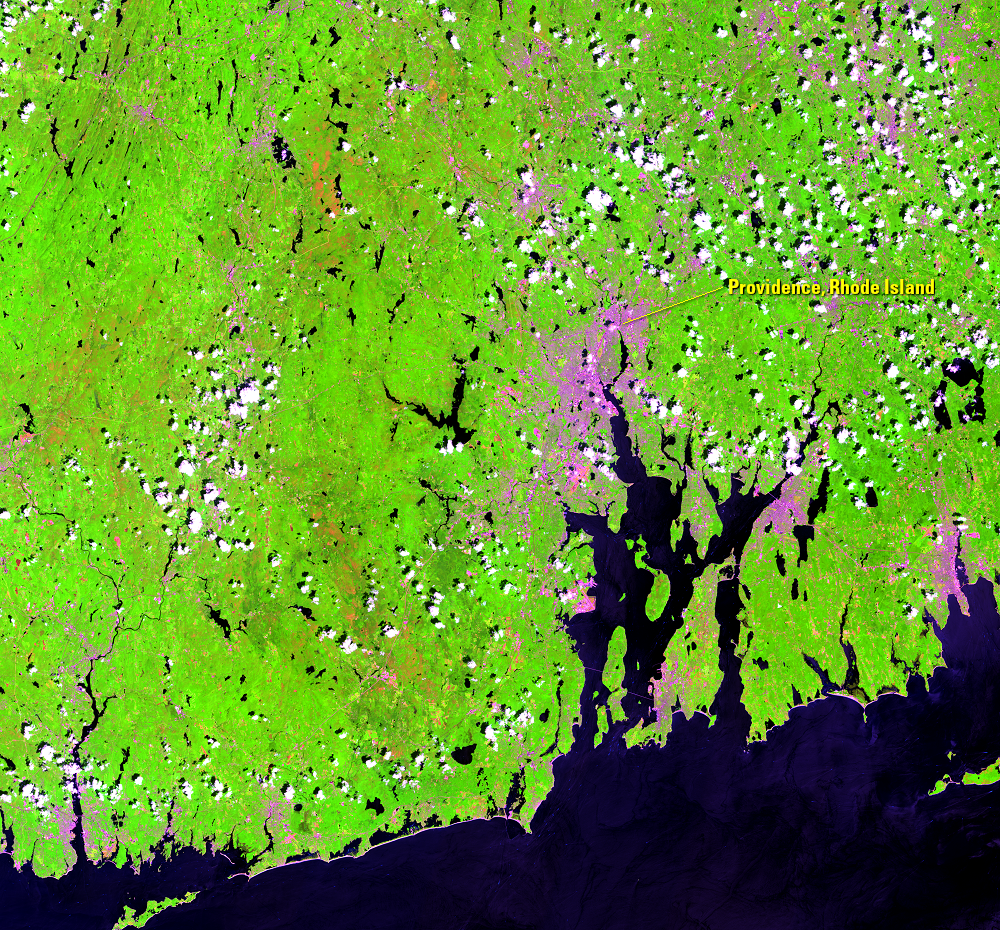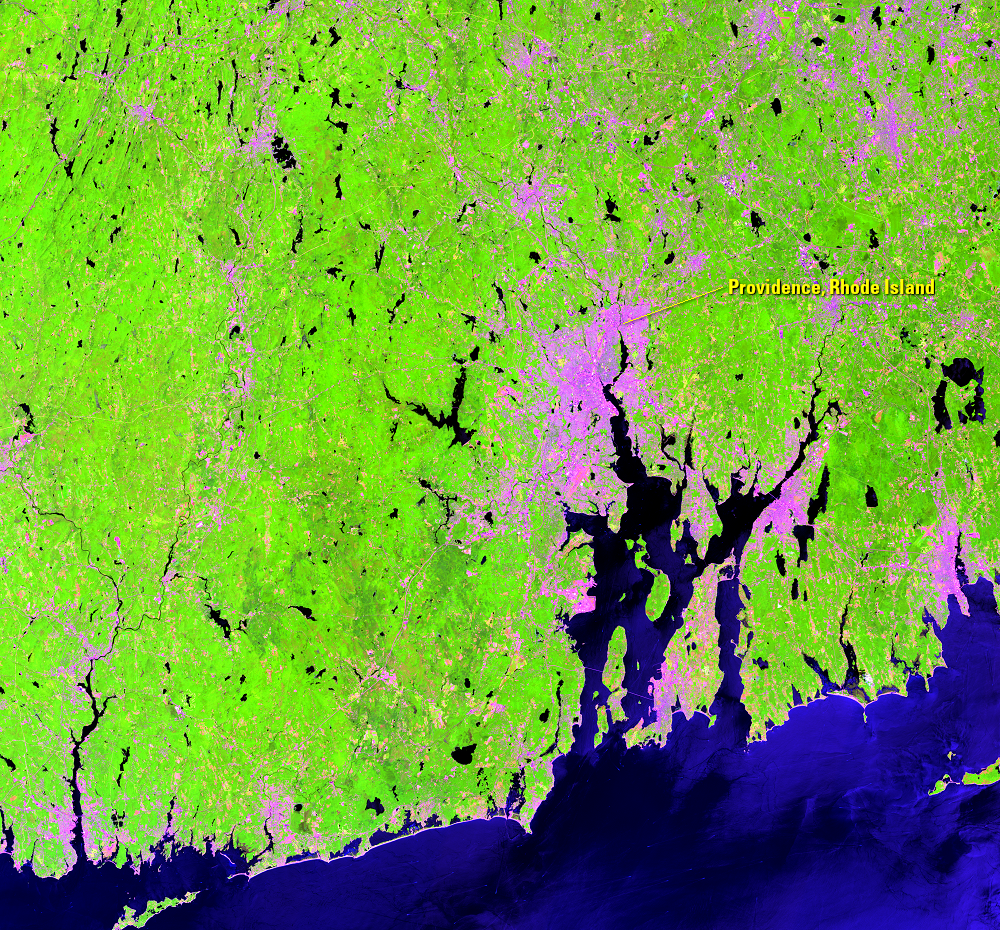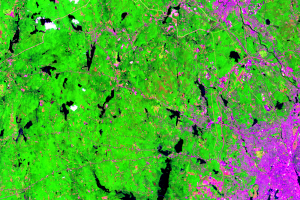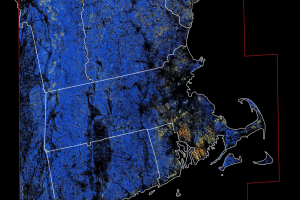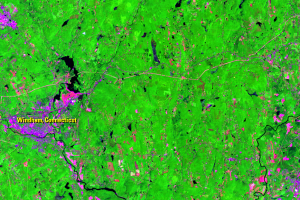While certainly too small to see from space, the gypsy moth caterpillar (Lymantria dispar) can cause enough change in a forest to be seen with Landsat’s 30-m resolution. A mere 1/16 inch long when they hatch in May, the caterpillar can reach 3 inches long by late June when they pupate. In that short time span, the pest feeds on the leaves of deciduous trees. Beginning in 2016, they caused noticeable change in the Northeastern United States.
While Landsat has not typically been used to monitor insect outbreaks in near-real time, new analytical tools combined with the open access to Landsat data make it possible to quantify insect damage over a large area at a level of detail not possible with aerial surveys alone.
The 2016 and 2017 images show the widespread defoliation of the trees in orange-brown, with a large area of heavy defoliation to the west of Providence, Rhode Island, and additional patches in eastern Connecticut. In 2018, defoliation was much less widespread and severe; however, continued defoliation is now mixed with mortality as individual trees succumb to multiple years of defoliation and other stressors including drought.
Imagery
Every picture has a story to tell
Correlated
Additional story information
Downloads
Elkinton, J., Boettner, J., and Pasquarella, V., 2018, Gypsy Moths in 2017—A Pathogen Epidemic: Massachusetts Wildlife, v. 68, no. 1, p. 30–35.
Massachusetts Dept. of Conservation and Recreation, 2017, Forest Pest Fact Sheet—Gypsy Moth: Forest Health Program, accessed December 10, 2018, at https://www.mass.gov/files/documents/2017/12/05/MAGypsyMoth2017.pdf.
Massachusetts Dept. of Conservation and Recreation, 2018, Gypsy Moth in Massachusetts: Forest Health Program, accessed December 10, 2018, at https://www.mass.gov/guides/gypsy-moth-in-massachusetts.
Pasquarella, V.J., Bradley, B.A., and Woodcock, C.E., 2017, Near-Real-Time Monitoring of Insect Defoliation Using Landsat Time Series: Forests, v. 8, no. 8, https://dx.doi.org/10.3390/f8080275.
Pasquarella, V.J., 2018, Landsat-based Gypsy Moth Defoliation Assessment (Southern New England) (Version 3.0) [Data set]: Zenodo, accessed March 19, 2019, at https://doi.org/10.5281/zenodo.1493407.
Pasquarella, V.J., Elkinton, J.S., and Bradley, B.A., 2018, Extensive gypsy moth defoliation in Southern New England characterized using Landsat satellite observations: Biological Invasions, v. 20, no. 11, p. 3047–3053, https://doi.org/10.1007/s10530-018-1778-0.
Tobin, P.C. and Blackburn, L.M., 2007, Slow the Spread—a national program to manage the gypsy moth: U.S. Department of Agriculture, Forest Service, Gen. Tech. Rep. NRS-6, accessed December 10, 2018, at https://doi.org/10.2737/NRS-GTR-6.
USDA, 2015, European Gypsy Moth—Pest Identification: USDA Animal and Plant Health Inspection Service, accessed December 10, 2018, at https://www.aphis.usda.gov/aphis/ourfocus/planthealth/plant-pest-and-disease-programs/pests-and-diseases/gypsy-moth/ct_emg_identification.
USGS, 2016, Landsat Monitors Gypsy Moth Damage: USGS Image of the Week, accessed December 10, 2018, at https://eros.usgs.gov/image-of-the-week/landsat-monitors-gypsy-moth-damage.
USGS, 2017, Gypsy Moth Infestation Continues in New England: USGS Image of the Week, accessed December 10, 2018, at https://eros.usgs.gov/image-of-the-week/gypsy-moth-infestation-continues-new-england.


